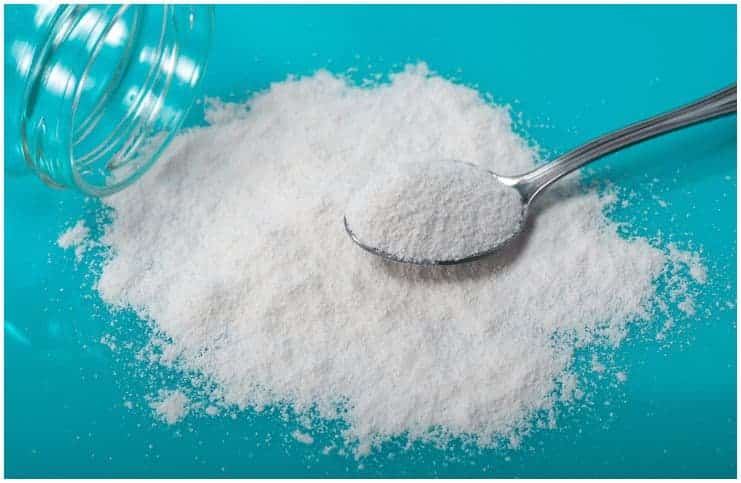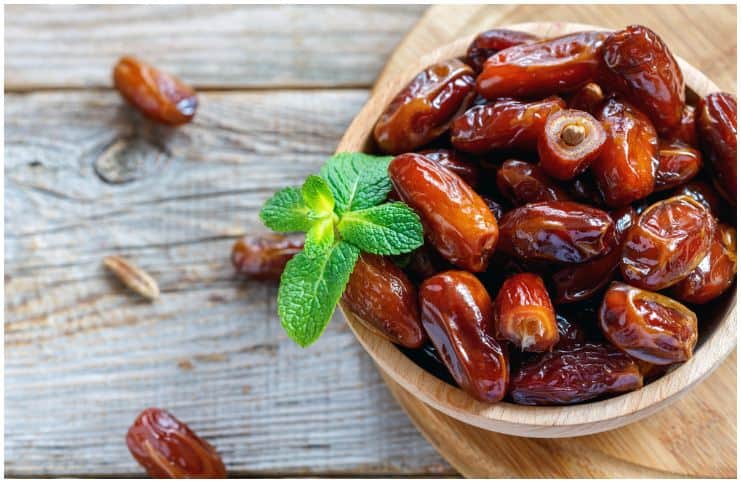Maltodextrin – Dangers and Side Effects (Upset stomach, Diarrhea, Vomiting, Diabetes, Allergy) + Substitutes:
Maltodextrin is an artificial sugar that has a mild, sweet taste. It is produced by using enzymes or acids to break down starches like corn, rice, and potatoes into smaller pieces.
Maltodextrin is actually a term that applies to any starch hydrolysis product containing fewer than 20 glucose units.
Since it is basically an isolated and overly processed carb, it doesn’t have the same beneficial effect as real complex carbs that absorb into your bloodstream more slowly (because they usually come with protein, dietary fiber, antioxidants, minerals, or fats when found in whole foods).
Is It Gluten-Free?
Yes, since it is a highly processed starch product. Most maltodextrin is usually produced from corn. This artificial sugar may also be manufactured from wheat or tapioca, but it is considered safe for individuals with gluten sensitivity.
Is It Vegan?
This polysaccharide should not be confused with dextrose, which is actually glucose and a natural product. This artificial sugar is artificially produced and is not found in nature.
In the U.S., manufacturers primarily use corn, and in Europe, manufacturers primarily use wheat. Virtually all the maltodextrin used throughout the natural products industry is genetically modified.
Genetically modified foods contain toxic pesticides and chemicals that can wreak havoc on your digestive system over time and tax your organs of elimination (i.e. kidneys, liver, bladder, lymphatic system, etc.).
As a food additive, pure maltodextrin is designated GRAS (Generally Recognized as Safe) by the FDA. However, GRAS does not mean that it is a healthy, nutritional addition to our food.
Glycemic Index
110
Uses
This compound is used as a filler or thickener because it’s relatively cheap.
You may see it on the following product labels: fat-free products, canned fruits, desserts, gelatin, instant puddings and gelatins, sauces, salad dressings, commercially baked goods (even those labeled gluten-free), meats (particularly processed meats), snacks, frozen yogurt, powdered drinks, and some sugar substitutes.
Some bodybuilders also use this polysaccharide as a weight gainer.
According to the “Glucose Syrups: Technology and Applications,” this substance helps maintain increased glucose levels in your bloodstream, which provides energy to your muscles.
Beer
It is a non-fermentable sugar that is added to the boil to add body and mouth-feel to the beer and is used primarily in low gravity beer.
It is also a common excipient (non-active agent) in pharmacology: it is used in the making of many drugs to which it provides desired properties such as taste, solubility, or shape.
Dangers and side effects of maltodextrin
The consumption of maltodextrin has similar health risks and side effects as most food additives.
In any case, the symptoms experienced by those reporting side effects of this substance consumption are similar to those of most carbohydrate intolerances and include bloating, upset stomach, diarrhea, vomiting, flatulence, and unexplained weight gain.
Allergies
A food allergy is a condition in which exposure to a food triggers a harmful immune response.
Some people may also experience allergic reactions with symptoms including – hives, rashes, eczema, or itching in the mouth.
In addition, there are also recent studies from the NIH indicating that maltodextrin may be linked with inflammation in the digestive system, and those with IBD (inflammatory bowel disease) or IBS (irritable bowel syndrome) could be affected.
High glycemic index – Diabetes
The glycemic index is a value assigned to foods based on how quickly or how slowly those foods cause increases in blood sugar levels. This compound has 4 carbohydrates per gram, the same amount of sucrose or table sugar. Its glycemic index is higher than table sugar: 106-136.
Bloating and flatulence
This is due to the bacteria in your gut becoming extremely active when you digest artificial complex carbs.
Celiac disease
Celiac disease is an autoimmune disorder that affects the digestive process of the small intestine.
When you have this condition, and you consume food with gluten in it, the gluten triggers an immune response which is not normal. Therefore, wheat-derived maltodextrin may pose health concerns for individuals with celiac disease.
Healthier alternatives
#1 Guar Gum
Guar Gum, also sometimes called gellan gum, comes from the seeds of the guar or cluster bean plant. It is a usual powdered product used to emulsify, stabilize, and thicken the texture of some industrial products and foods.
#2 Dates
Dates are a good source of numerous minerals and vitamins, sugar, energy, and dietary fiber. Moreover, dates contain iron, calcium, potassium, phosphorus, zinc, magnesium, and protein.
#3 Pectin
Pectin, a naturally occurring substance, is usually found in apples, berries, and other fruit. When heated together with sugar, pectin causes a thickening which is characteristic of jellies and jams.
That is why some fruits, such as – quince and apples, are very firm.
#4 Stevia
Stevia, native to Paraguay, has traditionally been used to sweeten beverages and make tea. This extract is usually approximately 200 times sweeter than sugar.
Note
Stop confusing your body. If you have a desire for something sweet, eat some fruits, but stay away from “fake” foods.
READ THIS NEXT:
Casomorphin and Addiction to Cheese?
Foods High in Lectins (List) – The Anti-Nutrient
References https://www.ncbi.nlm.nih.gov/pmc/articles/PMC4940893/ https://www.ncbi.nlm.nih.gov/pubmed/20975107 https://www.sciencedirect.com/topics/biochemistry-genetics-and




Powered ice tea mix is the worse for me.
It was in use over 40 years ago when I was in college and I remember getting nauseous from it then as I do now.
Thank you for the reminder.
Caution–Stevia may, in fact, contain maltodextrin. That white powder in the packet is not Stevia, but maltodextrin, which a clear drop of liquid Stevia has been added to.
I could never understand why my 2 cups of (fill in the blank daily beverage) would give me terrible side affects. I rotated between Equal, Splenda, and Stevia. No change. I went on to oat milk, coconut milk, soy, rice, and almond milk, with no change.
Turns out ALL of the products I mentioned have maltodextrin added! I did find a brand of soy and another of rice milk that do not have maltodextrin added. Also, I have gone back to using real sugar. Guess what? No more allergy symptoms, no more nausea, and no more severe bowel issues.